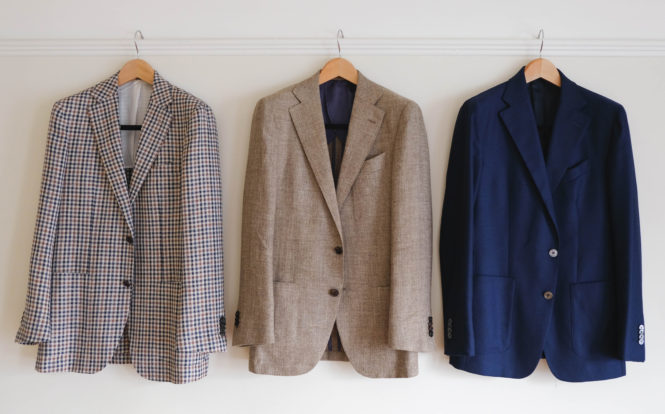Mid-summer may seem like the least appealing time of year to wear tailored clothing, but the opportunities and obligations are everywhere – weddings, vacations, and other summery social events often benefit from (or require) a certain level of formality. While wearing a full suit and tie can indeed be a bit stifling, I have found that sportcoats are a great middle ground – put-together enough to look good, but not nearly as stuffy or unpleasant as the full rig.
The key to making sure you stay cool (and also look cool) comes down to finding the right summer sportcoat – as long as it meets a few criteria, it should be easy to wear to many of those engagements on your summer calendar.
The Fabric
Your choice of fabric will play the biggest role in how breathable a sportcoat will wear, as well as how it will pair with the rest of your summer clothing. There are a few common fibers for warm-weather attire, each with their own set of advantages and disadvantages:
- Wool is the classic fabric for tailored clothing. Although it isn’t often associated with breezy summer attire, it’s actually a great choice – for starters, it can be made lighter and with a more open weave than many plant-based textiles. Weaves like fresco, tropical wool, and hopsack are all known for being relatively airy. One catch is that some wool fabrics can look too formal to be worn as a lone sportcoat, so finding something with texture is necessary.
- Linen is a quintessential summer fabric. It is reasonably light and cool-wearing, although very prone to wrinkling. The textured finish and casual appearance makes it a classic summer choice. It makes for a great shirt (especially when mixed with cotton), but if you want to wear it as a sportcoat it will need to be on the beefy side, probably at least 12 ounces (any less and it won’t be sturdy or durable enough).
- Cotton is another popular choice, as it is already a go-to for many wardrobe essentials (chinos, denim, and shirts, to name a few). While it does lend itself to casual tailoring, it requires a certain level of heft and sturdiness to hold up to the rigors of heavy wear, and this added weight negates any breathability it might otherwise have.
My recommendation is to go for a blend of fibers – with their powers combined, blended fabrics can capitalize on the benefits of each material. Most of my summer blazers are a wool/silk/linen mix – the wool allows for a light, open weave and resistance to wrinkles, and the linen provides that summery texture as well as moisture-wicking abilities. Silk – while very hot-wearing on its own – increases strength while adding very little weight, allowing the fabric to remain light and airy.
My favorite weave for wool/silk/linen fabrics is hopsack, an open construction that gives tailored clothing a less formal look while also improving airflow. All three of my current summer sportcoats are hopsack (the sweltering cotton twill sportcoats are long gone).
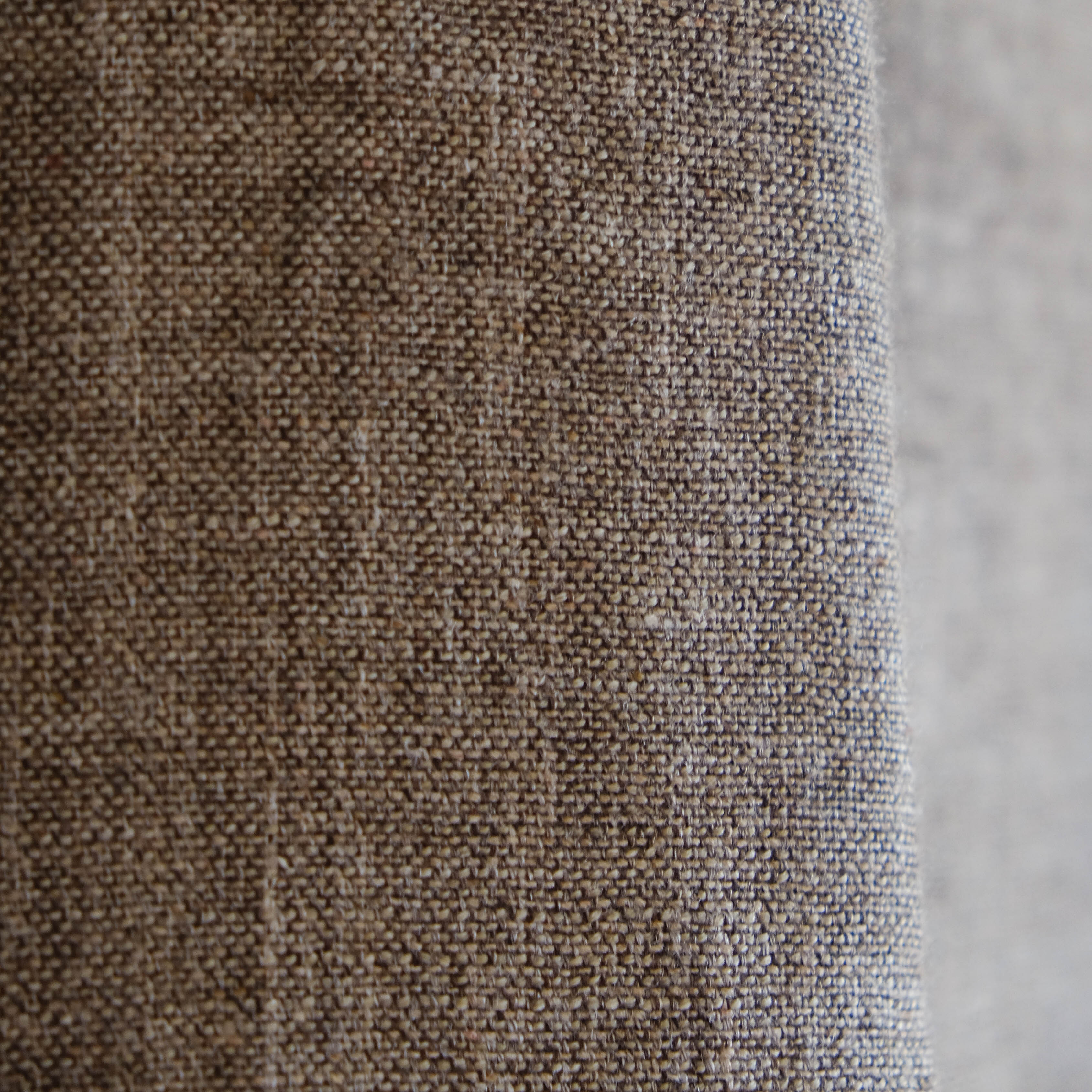
The Construction
Unsurprisingly, this is where ‘less is more’ is the best guidance to follow. The biggest difference you can make is to minimize the amount of lining in a jacket; the absence of tightly-woven synthetic material across your back will do wonders for reducing how much of your shirt is soaked in sweat. Likewise, a light canvas and small amounts of padding will reduce the amount of insulating material around your body. And while the ‘unstructured everything’ trend of a few years ago might be on its way out, summer clothing is a great place to utilize the minimalist, casual, wears-like-pajamas feeling of clothing that completely lacks any internal structure. A light canvas won’t cause any issues, though, and will make the garment look a bit more polished. Just keep the internal pieces to a minimum and you’ll dramatically improve airflow.
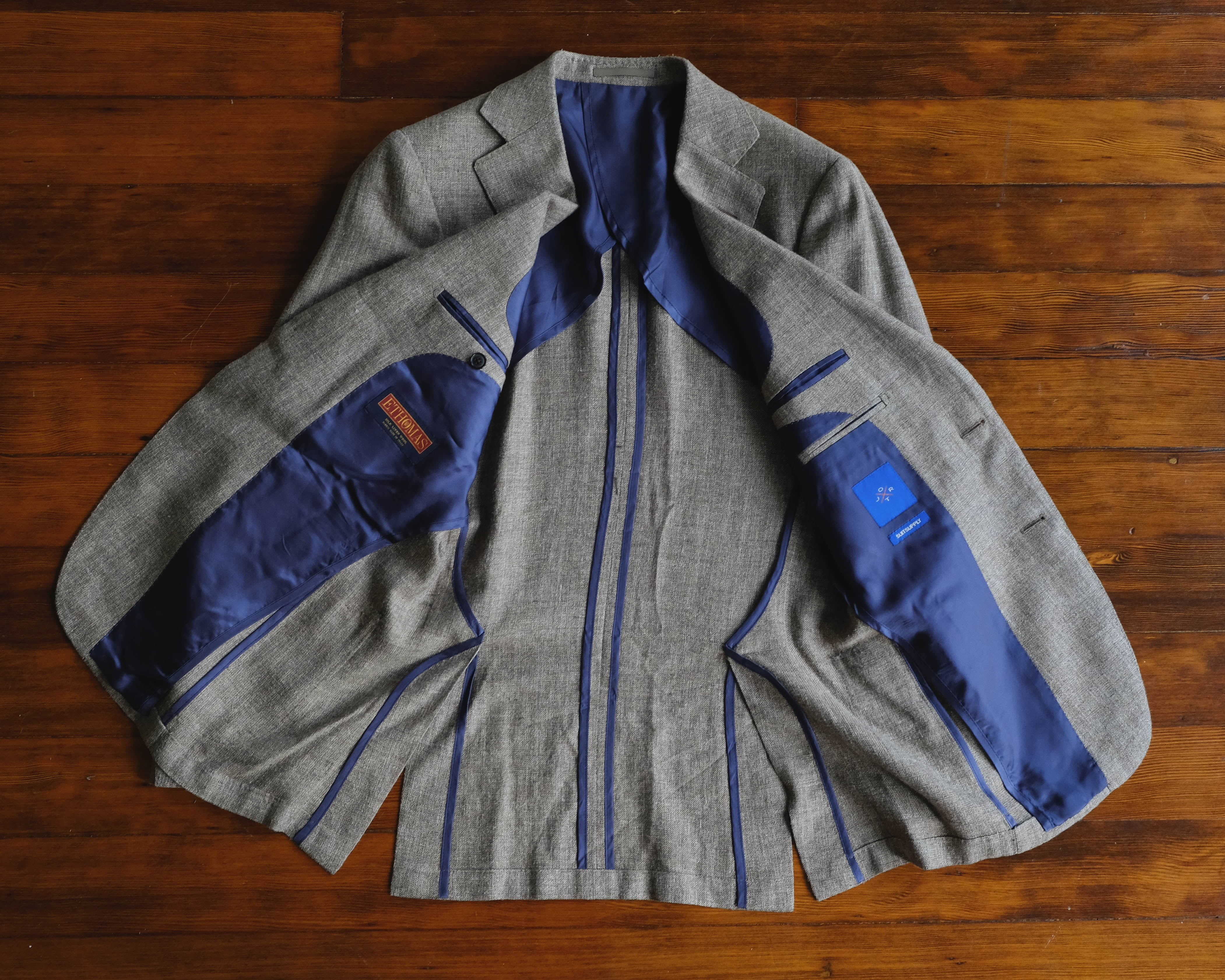
The Fit
All the regular concepts of how tailored clothing should fit still apply, with an added emphasis on not going too slim. Overly tight clothing is a great way to lose the benefits of everything discussed above, as it will reduce the airflow that you’ll so desperately need. Keeping classic proportions will not only increase the stylistic longevity of the garment, but will also make sure that your sportcoat isn’t glued to your back.

The Details
These aspects of a sportcoat won’t keep you any cooler during that 3pm wedding ceremony in the middle of an open field, but they’ll at least keep you from looking like you walked out of a board meeting. Summer style is all about comfort, but it helps to look the part too. Since summer sportcoats are best paired with casual warm-weather clothing – chinos, loafers, perhaps an absence of socks and ties – it’s best to keep the details informal so that everything fits together well. Going for patch hip pockets is a good start, as is a classic notch lapel (and you already have barely any padding in those shoulders to keep things light, right?). This is also a good opportunity to be a bit bolder with buttons – while brown horn is a classic, lightweight sportcoats can look great with lighter button colors like tan and light brown. Mother-of-pearl is another great choice; the smoky color of the MOP buttons on my jacket below add a bit of intrigue without giving it a full-blown ‘yacht captain’ vibe.
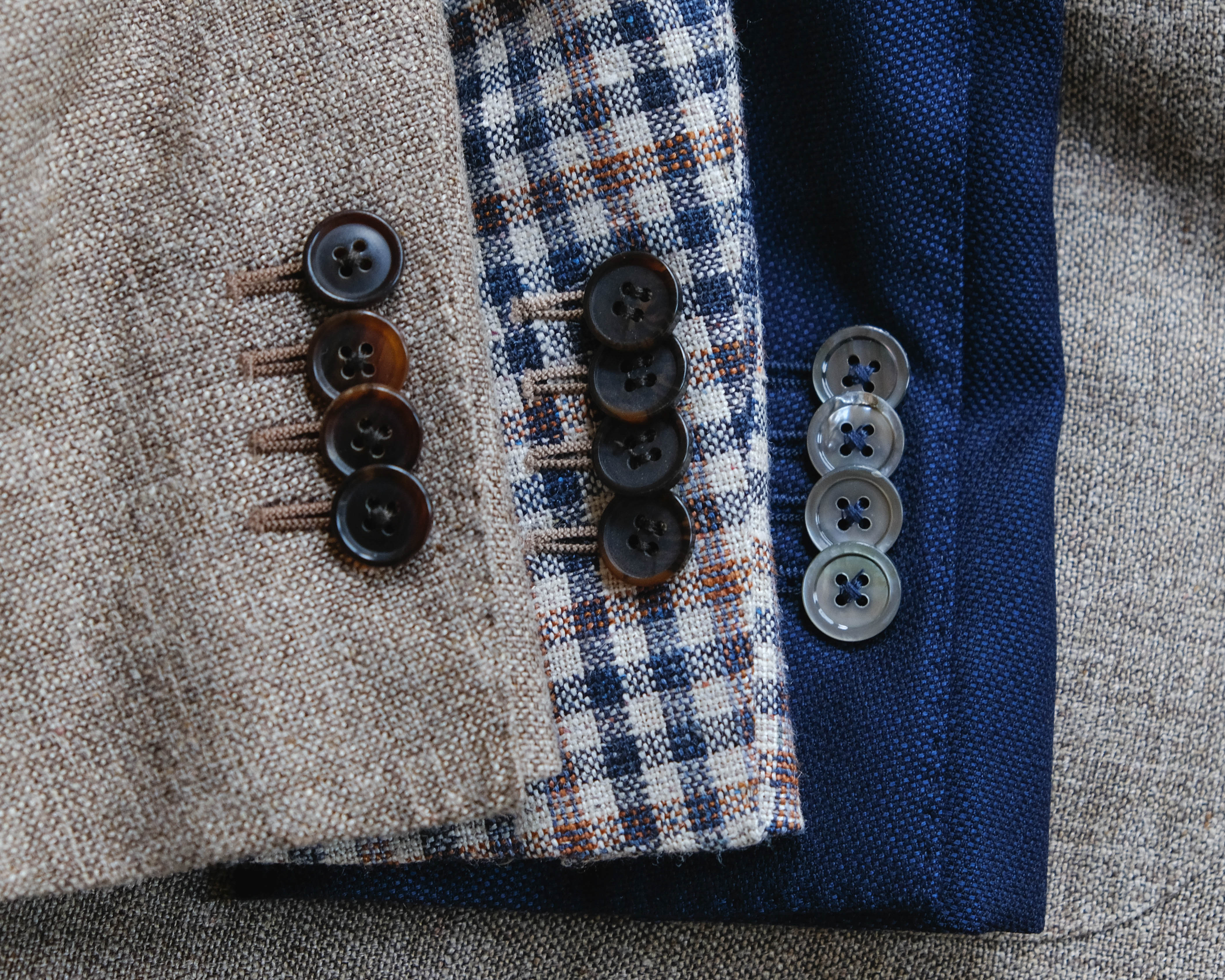
Color and Pattern
Given that this is a summery, less-than-formal garment, it’s also an opportunity to experiment with colors and patterns that might normally sit outside of a classic business wardrobe. Lighter hues seem perfect for this application – go a couple of shades lighter than your classic neutrals like navy, brown, gray, and green. Patterns are a welcome addition as well, as they’ll add to the casual nature of the jacket (and they probably won’t be competing with a tie very often). Check patterns like Prince of Wales and gunclub look great in dusty, neutral color palates on these sorts of garments.
I try to make sure that the colors will go well will light colored chinos, since that’s what they’ll be worn with most often. As long as the colors aren’t too close to each other then it should be easy to pair them together.
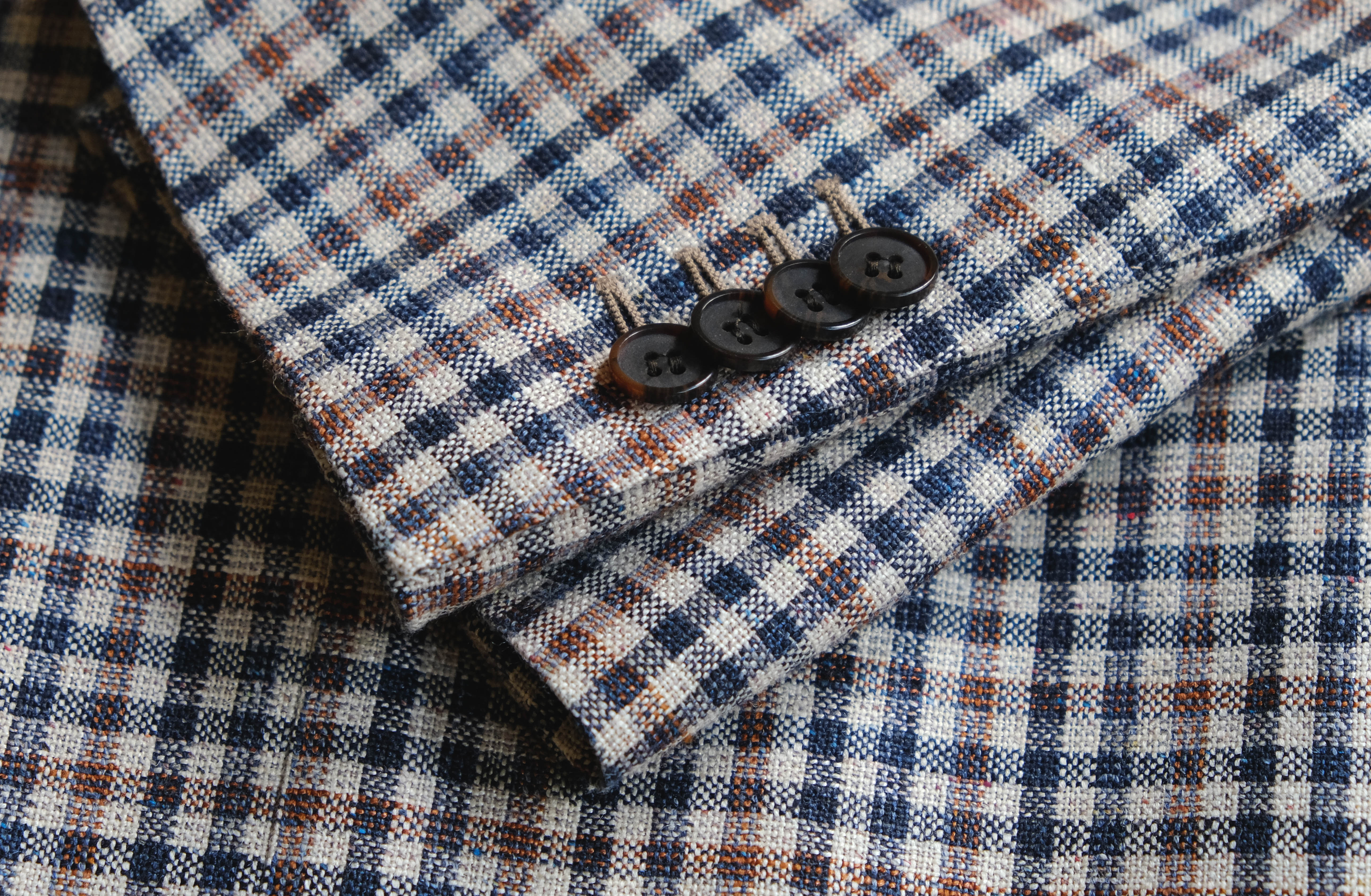
Where to Purchase
There are a myriad of places to buy tailored clothing, but not all will be ‘suited’ (pun intended) to this sort of informal and breathable style. I often find the middle of the market to offer the best value, and that is true here as well. For around $300 – $500 you can find many good options from Spier and Mackay and Suitsupply, two of my favorite sources for relatively affordable and high-quality tailored clothing. If you feel like going the made-to-measure route, you’ll have many more options as well as more control over the end garment’s design (although that’s not always as good as it sounds – but that’s a topic for another post). My favorite source for made-to-measure sportocoats is Beckett & Robb, who made the navy one above.
If you are able to find something that matches all of these criteria, you may just find that wearing more than one layer in the heat of summer isn’t as bad as it sounds. Sometimes a bit of sweat is unavoidable, but with the right sportcoat the summer might be a bit more bearable.



